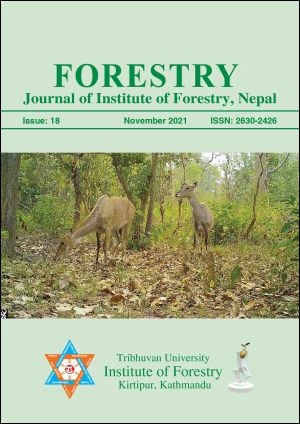A comparative study of carbon stocks in the Sal forest (Shorea robusta) in core and buffer zones of Shuklaphanta National Park, Nepal
DOI:
https://doi.org/10.3126/forestry.v18i01.41757Keywords:
Biomass, carbon stock, buffer zone, core area, shorea robusta, soil organic carbonAbstract
Forests play a significant role in sequestering carbon and regulating the global carbon and energy cycles. The amount of carbon in different carbon pools also varies at regional to local scales depending upon the environmental factors and forest management practices. This study was carried out to quantify and compare the carbon stocks in the Sal (S. robusta) forest in the core and buffer zones of Shuklaphanta National Park in Kanchanpur district of Nepal. A total of 50 sample plots with 25 in each core and buffer zone were laid in the field. The total carbon stock in the core zone was estimated to be 258.56 t/ha with 75.64% in biomass and 24.36% in the soil. In the buffer zone, the total carbon stock was almost 25% lower than that at the core zone but a slightly higher composition of biomass (i.e, 80.41% of 193.3 t/ha). These differences are likely due to the effect of the differences in management practice in the core and buffer zones. These estimates suggest that national parks have the great potential to sequester more carbon than the buffer zones. Findings from this study provide useful information on how different management practices could alter forest carbon stocks in Nepal.
Downloads
Downloads
Published
How to Cite
Issue
Section
License
© Tribhuvan University, Institute of Forestry




